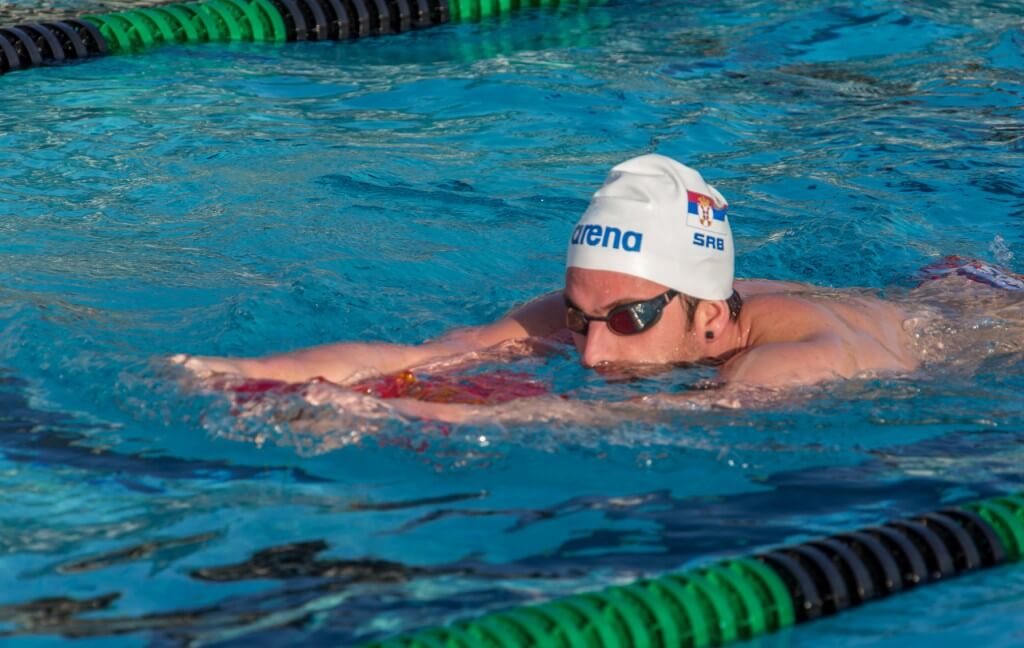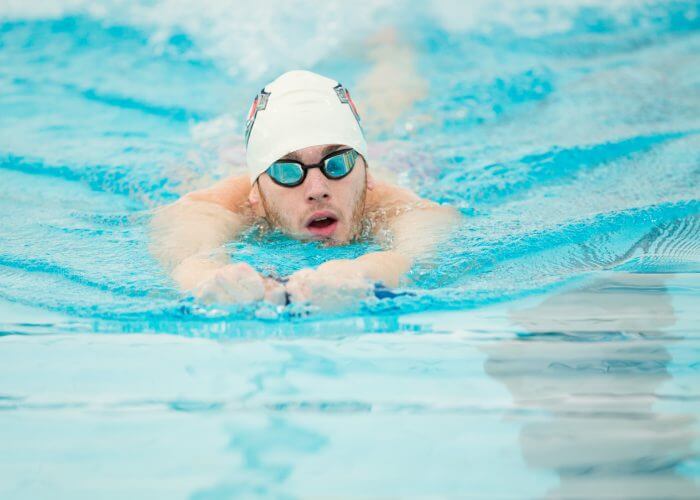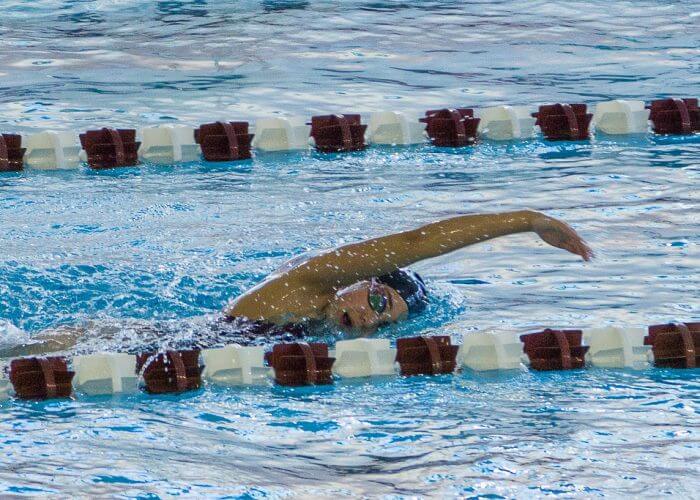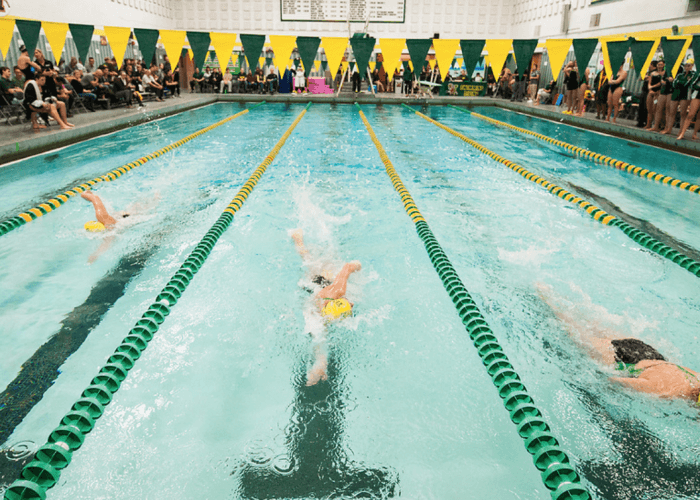Three Ways to Improve Your Flutter Kick

Mac Robertson, Swimming World College Intern.
Each time swimmers dive in the pool, they are required to coordinate and utilize an array of muscles from their head to their toes. While swimming is a sport that requires much upper body strength, one part of the sport that is often overlooked is the importance of a powerful flutter kick.
Creating power with the legs is essential to fast swimming. While the legs need to be muscular and flexible to generate a fast forward movement, the quadriceps, hip flexors, and core muscles must all be strong and work together to create a quick snap of the foot to work both sides of the kick.
Although many assume that the arm stroke is the most important part of swimming fast, the kick also has a significant effect on velocity. In a recent study published in the Journal of Sport Sciences, the researchers examined the effects of arm stroke and leg stroke for each of the competitive strokes. They found that the leg kick accounted for between 59 and 82 percent of the swimmer’s velocity (depending on stroke).
From these statistics, you can see that powerful legs are essential to finishing races strong. As your arm muscles begin to fail, driving your legs harder can help keep up your stroke count and propel you to the wall.
Here are three ways to improve your kick and efficiency in the water.
1.) Increase Ankle Flexibility

Photo Courtesy: Kevin D. Liles-USA TODAY Sports
Kicking generates power to move you through the pool. As you travel through the water, the downward and upward motion of your feet create the propulsion to catapult you forward. It is much easier to create this propulsion with flexible ankles.
Gary Hall Sr., Olympian and head coach of The Race Club, stresses the importance of ankle flexibility to enhance propulsion, as this flexibility allows for greater surface area contact with the water. With your toes pointed, this greater surface area results in more water being pushed during each kick. Ultimately, this leads to a faster flutter kick and greater propulsion.
The Race Club is a swimming club known for training elite and Olympic-level swimmers, and Coach Hall gives advice and exercises to improve ankle flexibility in this video. An easy way to increase flexibility is by kneeling on the ground with your buttocks resting on your calf muscles, forcing your ankles and tops of your feet to be stretched and flattened.
2.) Improve Core Strength

Photo Courtesy: Sarah Ehrmantraut
A strong core helps raise the hips to achieve high body position in the water. Coupled with a powerful kick, your swim speed will drastically improve. Swimming high on the water surface is always easier and faster than swimming with your hips low under the surface. Maintaining high body position will help reduce the amount of drag in the water.
Obtaining a strong core can be done through a variety of different exercises. Sit-ups, crunches, and V-ups are just three simple ways to help build a strong core. These core-building techniques can even be worked on in between sets during practice.
3.) Strengthen Cross-Body Connection

Photo Courtesy: Brian Jenkins – UVM Athletics
Cross-body connection refers to a swimmer’s ability to coordinate the kick across the core to the very fingertips with each rotation. A strong kick can help stabilize the counter-rotation of your body as you take each stroke. During each freestyle stroke, your body should rotate onto its side to minimize drag. A powerful kick can ensure that you don’t over-rotate, maintaining balance and also helping you rotate back to the other side. As the race comes down to the finish, arm muscles so often begin to fail and you rely on other muscles in the sequence to maintain speed.
Make sure to always be mindful of your body’s rotation. The rotation will help you slide through the water efficiently with a long catch and straight bodyline. As you get tired, a powerful flutter kick can allow your body to continue this rotation so that you stay fast and hydrodynamic.
You can improve cross-body connection with a variety of core exercises on land that should translate to the water. This yoga video particularly targets shoulder and hip flexibility, while improving core strength and balance.
At your next practice, make sure to take the kick set just as seriously as the main set. Building up the endurance in your legs will help you out-touch the competitors around you. Strong legs and a strong kick will make you a more efficient and fast swimmer!
All commentaries are the opinion of the author and do not necessarily reflect the views of Swimming World Magazine nor its staff.




Good information
In my case, I’d need foot surgery to get a good kick. I have feet that just slip through the water and barely create any power at all.
Gary Chak